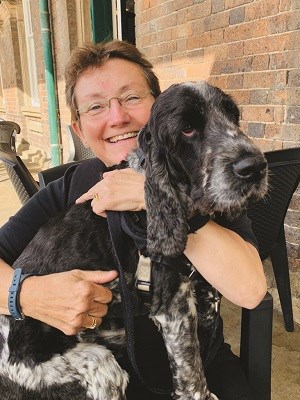Family Sign Language (FSL) tutor
Each issue, a different professional shares their expert advice and gives information to help you support your child. This time Angela Davies, a Family Sign Language (FSL) tutor, shares her insights.
What is FSL?
The National Deaf Children’s Society offers FSL to parents of deaf children who want to learn sign language. This interactive and fun course is available in different formats, including weekends, group sessions over a number of weeks, or a one-to-one session with an FSL tutor both online and in person.
What is offered will depend on which part of the UK you live in. In the sessions, a qualified tutor will deliver sign language lessons to parents or the whole family. In most cases families have no previous experience of deafness or sign
language.
What are the differences between FSL and British Sign Language (BSL)?
They are similar but FSL is aimed at family and friends who are communicating with a deaf child at home. It’s also similar to Makaton, mainly using single words such as toys, food and items in the house. There’s no exam at the end of the sessions. BSL classes are usually delivered at colleges and you will learn sentences and take an exam.
What happens in an FSL session?
Before I start the sessions, I create lesson plans and try and keep to them. But I’m flexible if the families want to learn specific signs that are helpful to them. A typical session could be about toys in the house. I would ask the family to collect the toys and I would show them the signs for them. I have been lucky to have worked with deaf children for many years and now I have someone special who assists me with this task, his name is Dasher and he’s my hearing dog. The children love him!
How can families practise between sessions?
It’s important families keep practising so that it becomes normal for the deaf
child to see, understand and use the signs that have been learnt. I suggest
they look up signs that may help them on YouTube or Signworld. This also
helps me identify what they need to learn in future sessions.
For families considering FSL, what advice can you give?
Do it! It can only be of benefit for the deaf child in your family. People forget the isolation that a child can feel. As a profoundly Deaf person myself, I’ve gone through this. I had a hearing family that I love to bits but they didn’t know how to communicate with me for many years.
What are the most rewarding and most challenging parts of teaching?
Seeing families and students embrace the teaching and use the skills they’ve learnt is so rewarding. Seeing a Deaf person smile when a hearing person is using sign language to communicate is something special. My challenge is to get more people involved in learning sign language so that they can communicate with the Deaf Community. That’s my aim for the future!

